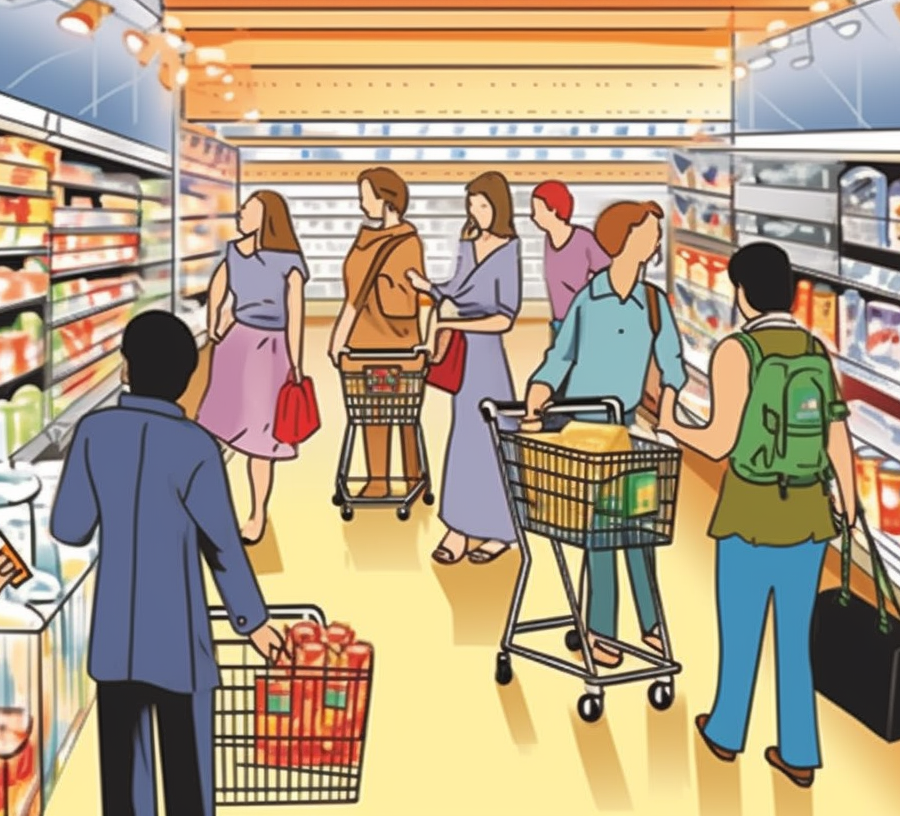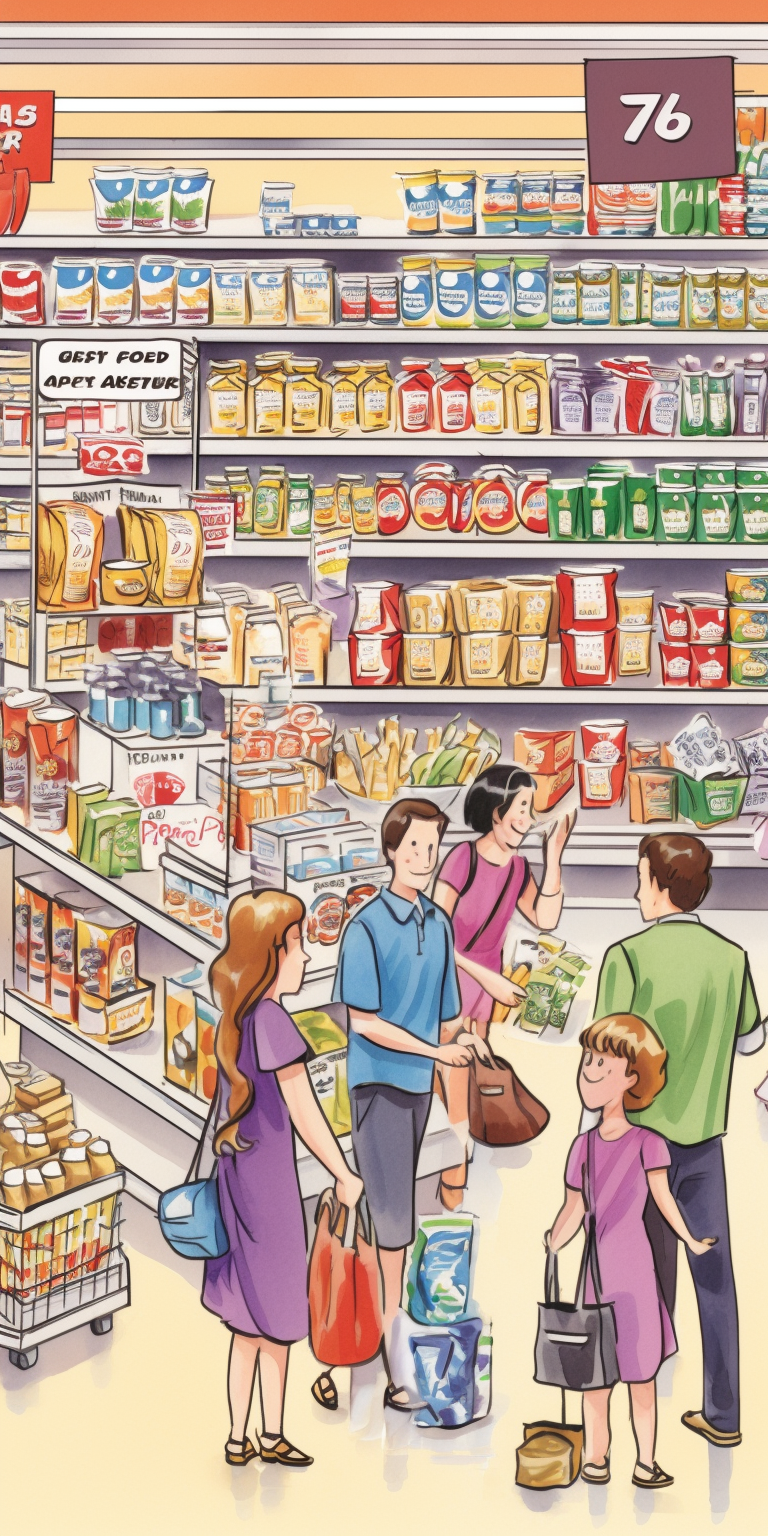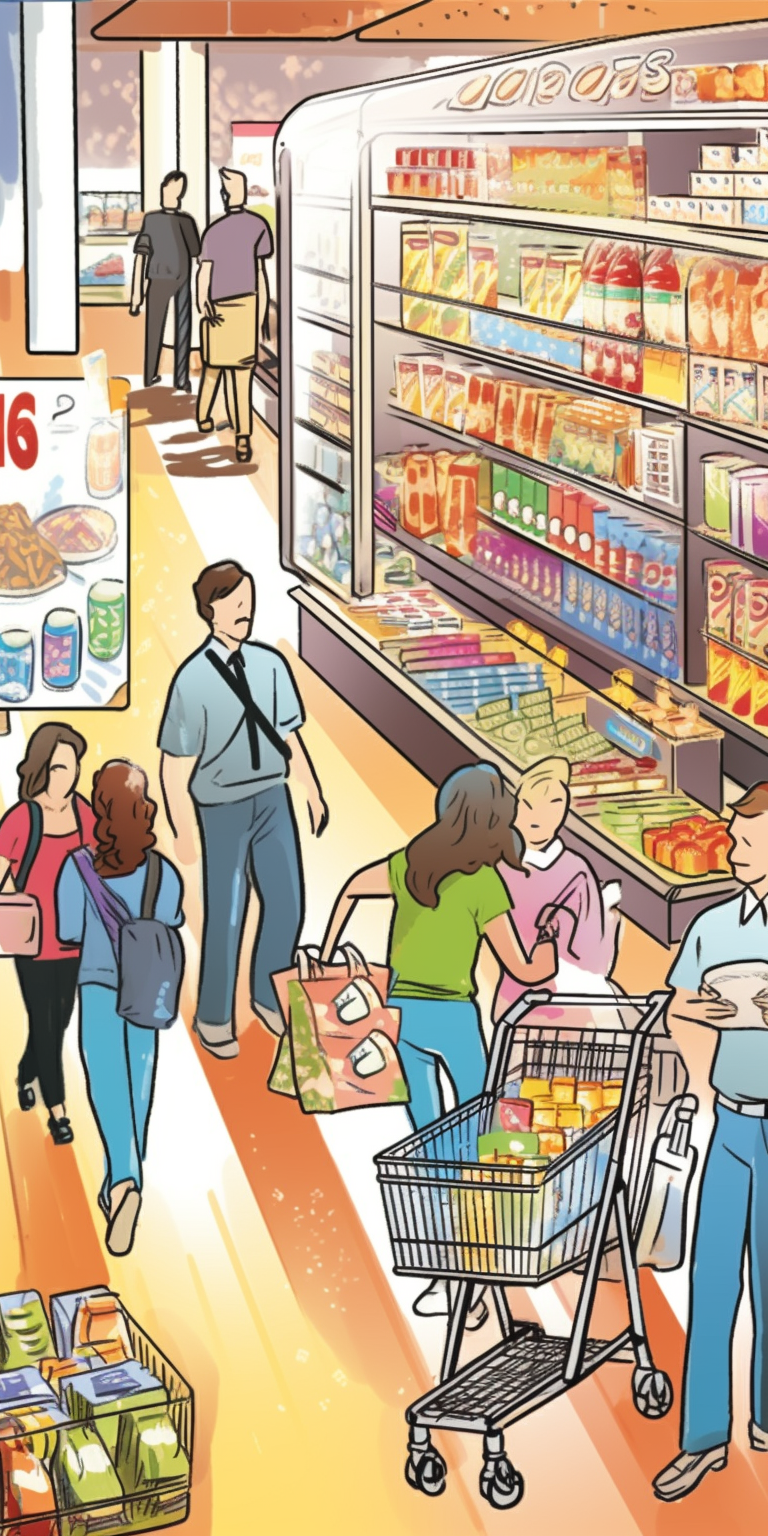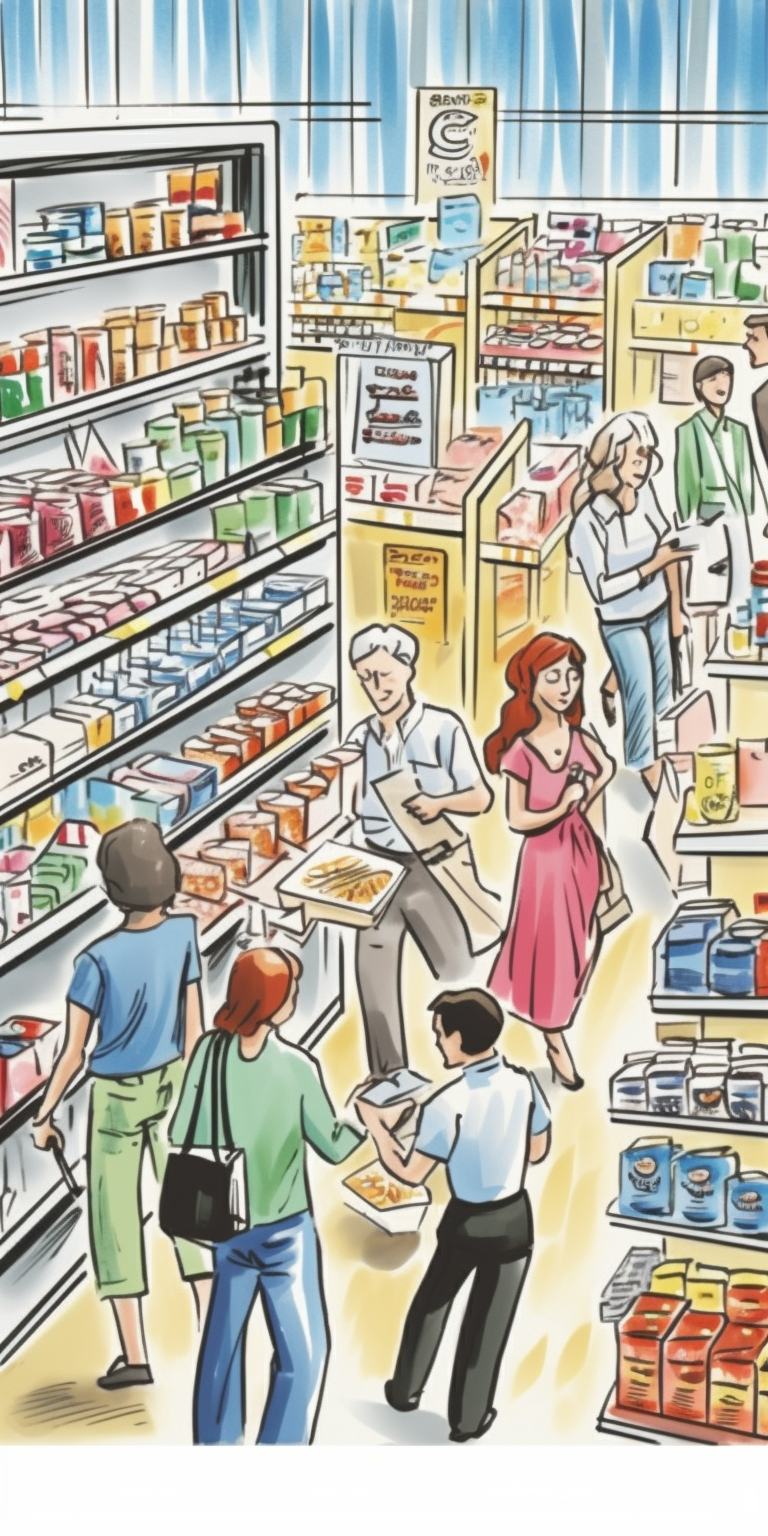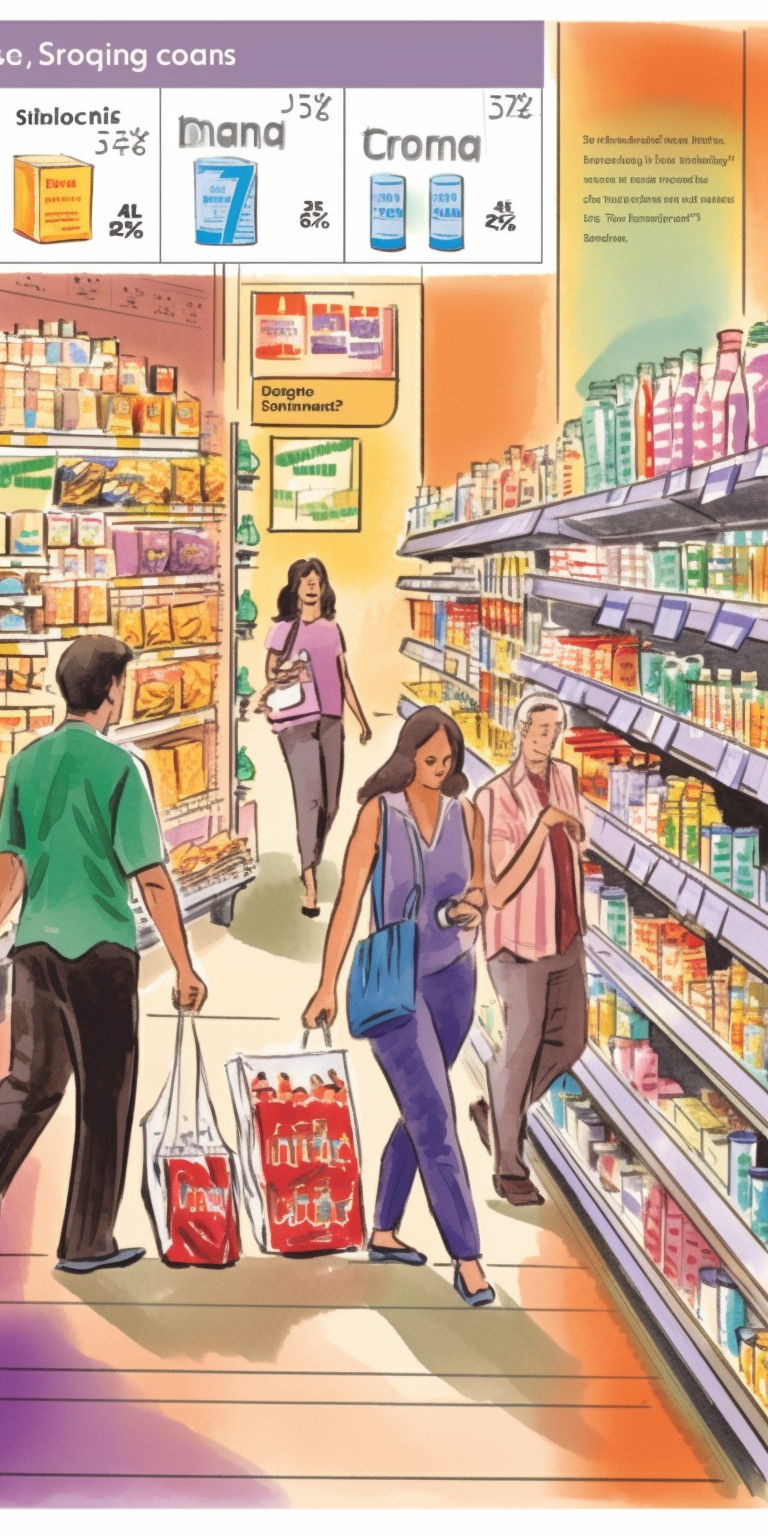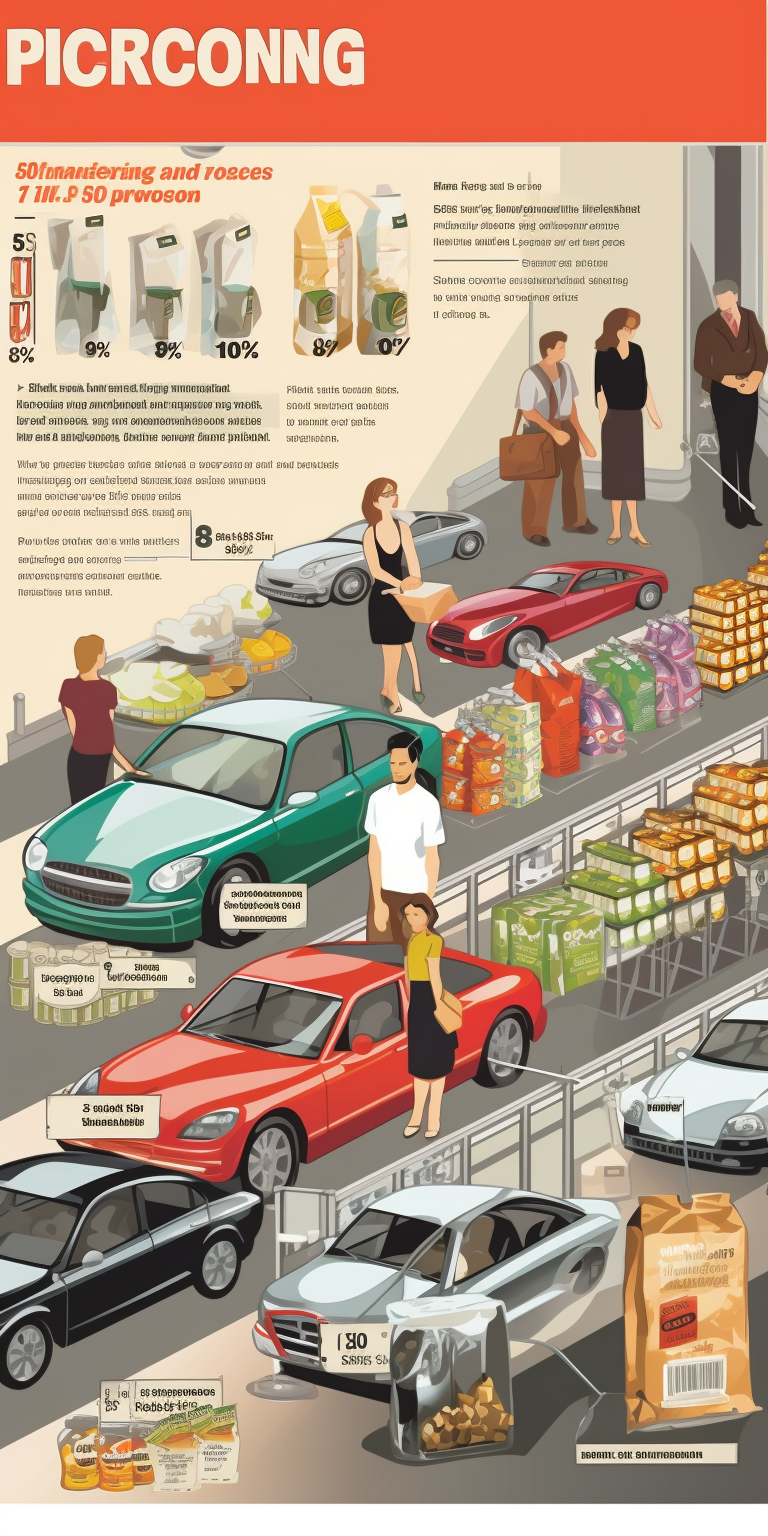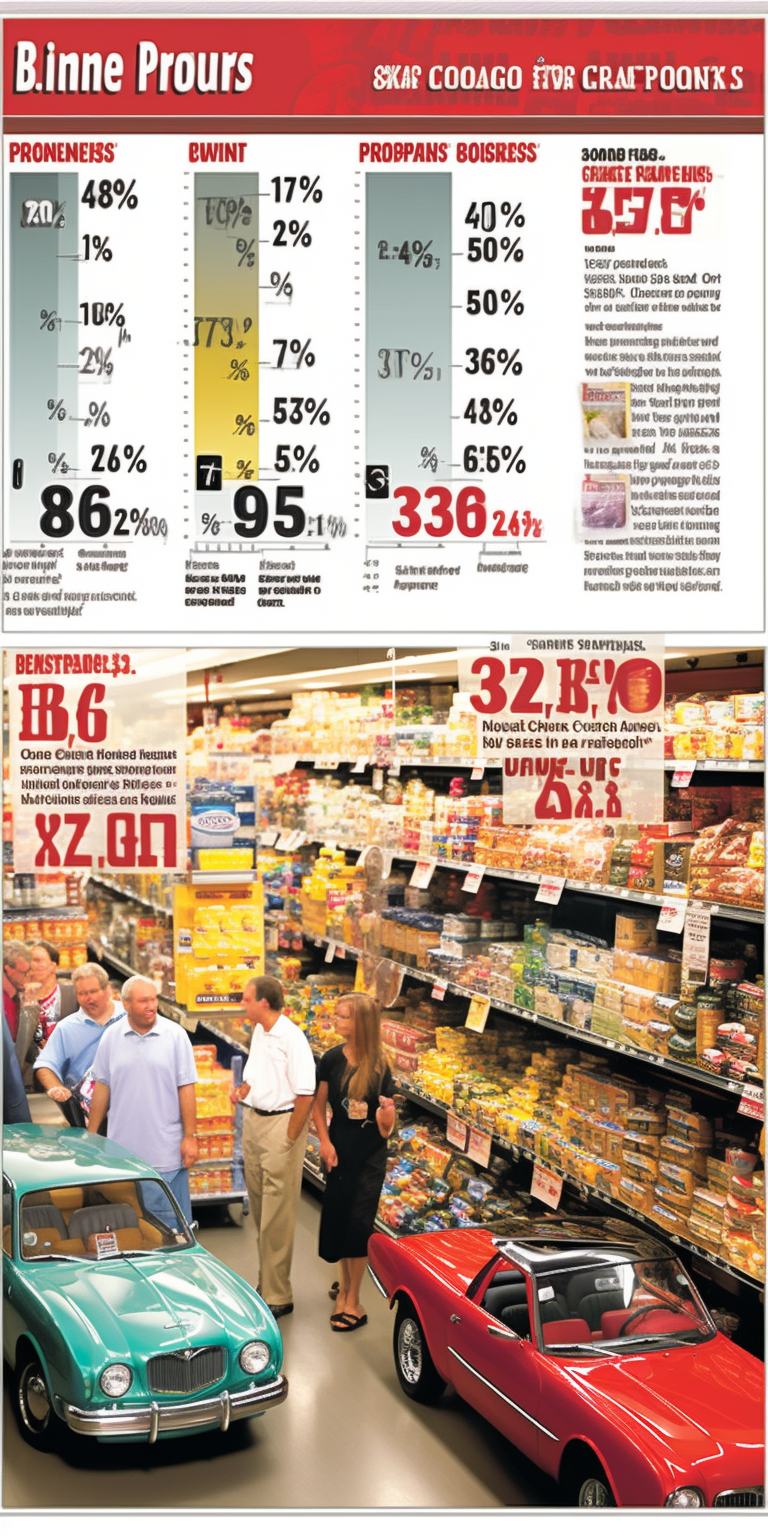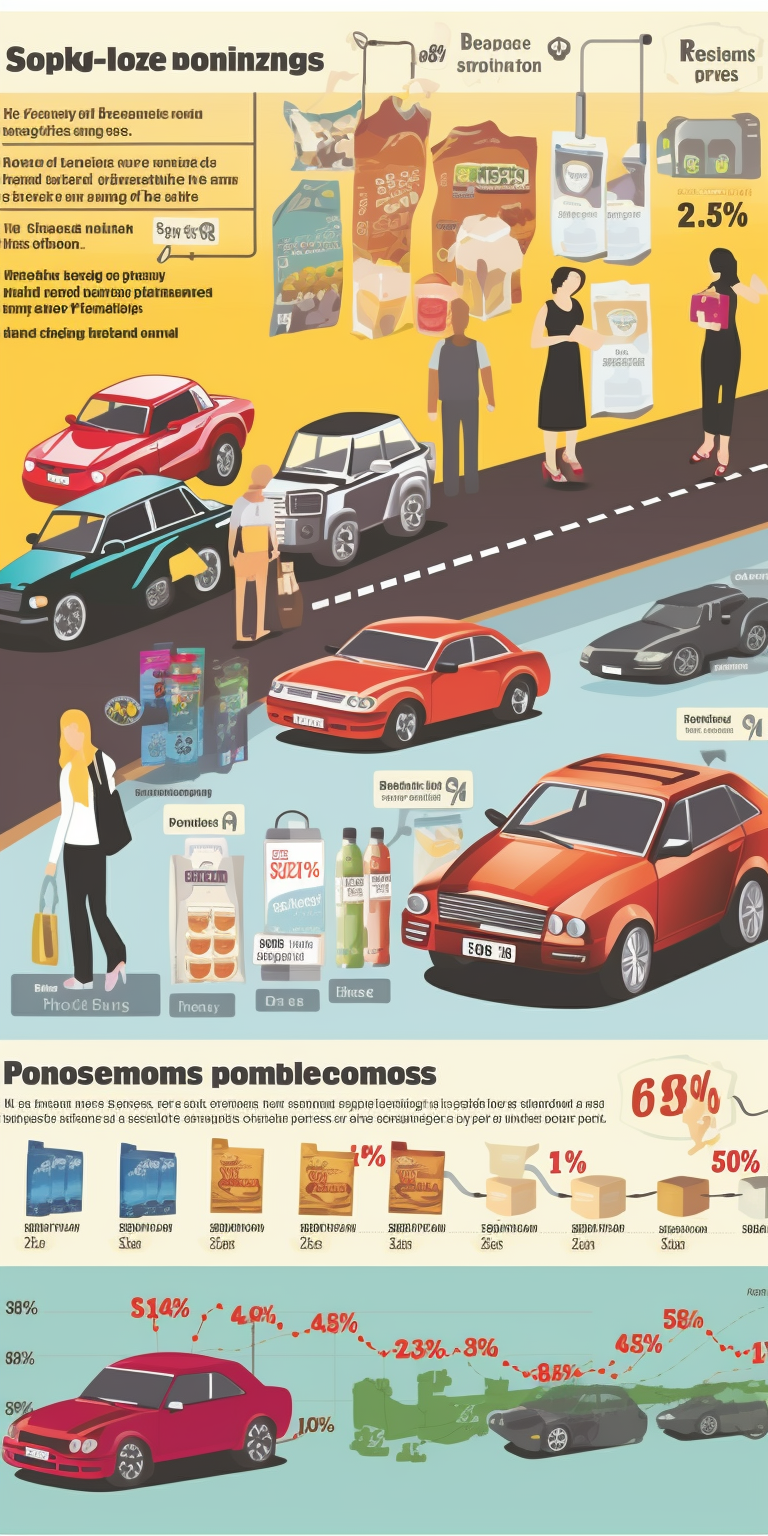Consumer Pushback Against High Prices: A Key Factor in Easing Inflation
Inflation Action: How Local Shoppers Stay Ahead! 🛒💸
Washington — Inflation stay shifting how plenny Americans shop. Now, da kine changes in consumer habits, dey stay helping bring down inflation.
Fed up wit’ prices stay about 19%, on average, moa high den befo’ da pandemic, consumers stay fighting back. In da grocery stores, dey stay moving ‘way from name brands to da store-brand stuffs, hitting up discount stores, or just buying less snacks or fancy kine foods.
Mo’ Americans stay buying used cars, too, instead of new ones, making some dealers drop prices on da new cars again. But da big kine pushback from consumers ‘gainst what da critics slamming as price-gouging, stay showing up da most with food and da stuffs like paper towels and napkins.
Lately, consumers not taking da high prices, so da big food companies stay slow down their price hikes from da tops of da past three years. Dis no mean grocery prices going fall back to da days from few years ago, but wit’ some stuffs, like eggs, apples, and milk, da prices stay below da tops. But da not-so-huge increases in food prices should help cool down da overall inflation moa, which stay way down from da peak of 9.1% in 2022 to 3.1%.
Public fed up wit’ da prices stay da main ting in President Joe Biden’s try fo’ re-election. Da polls showing even dough inflation dropping hard, plenny consumers stay not happy prices stay still way high, moa den befo’ da inflation start speeding up in 2021.
Biden stay echoing da criticism from plenny left-leaning economists dat da corporations wen jack up their prices moa den dey need fo’ cover their own higher costs, just fo’ beef up their profits. Da White House stay also going aftah “shrinkflation,” where da company, ‘stead of hiking up da price of da product, dey just make da package smaller. In one video come out on Super Bowl Sunday, Biden went off ’bout shrinkflation as one “rip-off.”
Consumer pushback ‘gainst da high prices making plenny economists tink inflation go ease up even moa. Dat go make dis round of inflation real different from da bad kine price jumps of da 1970s and early 1980s, da kine took long time fo’ beat ’em. When da high inflation stay sticking ’round, consumers usually get dis inflation mindset: Prices stay stay going up, so dey rush fo’ buy stuffs before prices go up moa, and dat kinda ting can make da inflation keep going.
“Was scared dat everybody go just deal wit’ da higher prices,” said Gregory Daco, main economist at EY, one consulting firm, who saying dis no happening. “I don’t tink we go start seeing da high inflation happening.”
Instead, dis time plenny consumers stay acting like Stuart Dryden, one commercial underwriter at one bank who live in Arlington, Virginia. On one recent trip to da regular grocery store, Dryden, 37, notice big price difference ‘tween Kraft Heinz brand stuffs and da store-brand ones, which he stay liking now.
Dryden, fo’ example, love cream cheese and bagels. One 12-ounce tub of Kraft’s Philadelphia cream cheese stay $6.69. Da store brand, he say, only $3.19.
One 24-pack of Kraft single cheese slices stay $7.69; da store label, $2.99. And one 32-ounce Heinz ketchup bottle stay $6.29, while da oddah one only $1.69. Same ting going on wit’ mac-and-cheese and shredded cheese stuffs.
“Just dose five stuffs togeddah already cost nearly $30,” Dryden said. Da oddah stuffs was less den half dat, he do da math, ’bout $13.
“I’ve been trying private-label options, and da quality stay da same and it’s almost one no-brainer fo’ switch from da stuffs I used to buy plenny of to just da private label,” Dryden said.
Alex Abraham, one spokesman fo’ Kraft Heinz, said dey costs went up 3% in da last three months of last year but dey raised dey own prices only 1%.
“We stay doing everyting we can fo’ find efficiencies in our factories and oddah parts of our business fo’ offset and make less da price hikes,” Abraham said.
Last week, Kraft Heinz said sales dropped in da last three months of last year as moa consumers wen drop down to da cheaper brands.
Dryden wen make oddah moves fo’ save money: One year ago, he wen move into one new apartment aftah his old landlord wen hike up his rent by ’bout 50%. His old apartment wen stay near one store where da groceries was kinda pricey, Whole Foods. Now, he stay shopping at one nearby Amazon Fresh and wen start going to one discount grocer Aldi every couple of weeks.
Samuel Rines, one investment strategist at Corbu, saying dat PepsiCo, Kimberly-Clark, Procter & Gamble, and plenny oddah consumer food and packaged goods companies wen take advantage of da rise in input costs from supply-chain troubles and Russia’s invasion of Ukraine fo’ jack up dey prices — and make moa profits — in 2021 and 2022.
One big ting was dat millions of Americans wen get solid wage bumps and wen get stimulus checks and oddah government aid, so dey could pay da higher prices moa easy.
Still, some people wen cry out ’bout da ting as “greedflation.” And in one research paper from March 2023, da economist Isabella Weber from da University of Massachusetts, Amherst, wen call um “seller’s inflation.”
But from da end of last year, plenny of da same companies wen find out dat da plan no moa working. Most consumers already wen spend all da money dey wen save up during da pandemic.
Da low-income consumers, especially, stay rackin’ up credit card debt and stay falling behind on dey payments. Americans overall stay spending moa careful. Daco saying overall sales during da holiday shopping season only went up 4% — and most of ’em was ’cause da prices stay high, not ’cause consumers really buying moa stuffs.
Fo’ one example, Rines pointing to Unilever, da company dat make, ‘mong oddah tings, Hellman’s mayonnaise, Ben & Jerry’s ice cream, and Dove soaps. Unilever wen jack up dey prices ’bout 13.3% on average ‘cross dey brands in 2022. Deir sales volume wen drop 3.6% dat year. So dey raised prices only 2.8% last year; deir sales went up 1.8%.
“Da consumer no moa ready fo’ take da higher pricing,” Rines said. “So companies was starting fo’ get lil bit more doubt ’bout dey ability fo’ make price be da thing dat drive dey revenues. Dey had fo’ get dose volumes come back, and da consumer wasn’t reacting da way dey stay pleased wit’.”
Unilever itself wen say poor sales performance in Europe was ’cause “share losses to private labels.”
Oddah businesses noticing too. Aftah dey sales went down in da last three months of last year, PepsiCo executives wen say dis year dey go hold back on price hikes and go focus moa on boosting sales.
“In 2024, we see … normalization of da cost, normalization of inflation,” CEO Ramon Laguarta said.
NOW IN ENGLISH
Consumer Pushback Against High Prices: A Key Factor in Easing Inflation
Inflation Action: How Local Shoppers Stay Ahead!
Washington — Inflation is changing how many Americans shop. Now, with changes in consumer habits, they are helping bring down inflation.
Fed up with prices being about 19%, on average, higher than before the pandemic, consumers are fighting back. In grocery stores, they are moving away from name brands to store-brand products, visiting discount stores, or simply buying fewer snacks or luxury foods.
More Americans are buying used cars instead of new ones, causing some dealers to reduce prices on new cars again. But the biggest pushback from consumers against what critics slam as price-gouging is seen with food and items like paper towels and napkins.
Lately, consumers are not accepting the high prices, so major food companies are slowing down their price increases from the highs of the past three years. This doesn’t mean grocery prices will fall back to the levels of a few years ago, but with some items like eggs, apples, and milk, the prices are staying below the highs. However, the relatively small increases in food prices should help cool down overall inflation more, which has dropped from its peak of 9.1% in 2022 to 3.1%.
The public’s dissatisfaction with prices remains the main issue in President Joe Biden’s attempt for re-election. Polls show that even though inflation is dropping significantly, many consumers are unhappy that prices are still much higher than before the inflation began accelerating in 2021.
Biden is echoing the criticism from many left-leaning economists that corporations raised their prices more than necessary to cover their increased costs, just to boost their profits. The White House is also targeting “shrinkflation,” where companies, instead of raising the price of the product, simply make the package smaller. In one video released on Super Bowl Sunday, Biden criticized shrinkflation as a “rip-off.”
Consumer pushback against high prices is causing many economists to believe that inflation will ease up even more. This will make this round of inflation very different from the significant price increases of the 1970s and early 1980s, which took a long time to overcome. When high inflation persists, consumers usually adopt an inflation mindset: prices will keep going up, so they rush to buy things before prices increase further, which can perpetuate inflation.
“I was afraid that everyone would just accept the higher prices,” said Gregory Daco, chief economist at EY, a consulting firm, who believes this is not happening. “I don’t think we will start seeing the high inflation happening.”
Instead, this time many consumers are behaving like Stuart Dryden, a commercial underwriter at a bank who lives in Arlington, Virginia. On a recent trip to the regular grocery store, Dryden, 37, noticed a significant price difference between Kraft Heinz brand products and the store-brand ones, which he now prefers.
Dryden, for example, loves cream cheese and bagels. A 12-ounce tub of Kraft’s Philadelphia cream cheese costs $6.69. The store brand, he says, is only $3.19.
A 24-pack of Kraft single cheese slices costs $7.69; the store label is $2.99. And a 32-ounce bottle of Heinz ketchup costs $6.29, while the other one is only $1.69. The same trend is observed with mac-and-cheese and shredded cheese products.
“Just those five items together already cost nearly $30,” Dryden said. The other items were less than half of that, he calculated, about $13.
“I’ve been trying private-label options, and the quality is the same, and it’s almost a no-brainer to switch from the things I used to buy a lot of to just the private label,” Dryden said.
Alex Abraham, a spokesman for Kraft Heinz, said their costs went up 3% in the last three months of last year, but they only raised their prices by 1%.
“We are doing everything we can to find efficiencies in our factories and other parts of our business to offset and minimize the price hikes,” Abraham said.
Last week, Kraft Heinz said sales dropped in the last three months of last year as more consumers switched to cheaper brands.
Dryden made other moves to save money: a year ago, he moved into a new apartment after his old landlord raised his rent by about 50%. His old apartment was near a store where the groceries were kind of expensive, Whole Foods. Now, he shops at a nearby Amazon Fresh and started going to a discount grocer, Aldi, every couple of weeks.
Samuel Rines, an investment strategist at Corbu, said that PepsiCo, Kimberly-Clark, Procter & Gamble, and many other consumer food and packaged goods companies took advantage of the rise in input costs from supply chain troubles and Russia’s invasion of Ukraine to raise their prices—and make more profits—in 2021 and 2022.
One big issue was that millions of Americans received solid wage increases and stimulus checks and other government aid, so they could afford the higher prices more easily.
Still, some people called the situation “greedflation.” In a research paper from March 2023, economist Isabella Weber from the University of Massachusetts, Amherst, called it “seller’s inflation.”
But since the end of last year, many of the same companies found that the plan was no longer working. Most consumers had already spent all the money they had saved during the pandemic.
Low-income consumers, especially, were accumulating credit card debt and falling behind on their payments. Overall, Americans were spending more carefully. Daco said that overall sales during the holiday shopping season only increased by 4%—and most of it was because prices were high, not because consumers were really buying more items.
For example, Rines pointed to Unilever, the company that makes, among other things, Hellman’s mayonnaise, Ben & Jerry’s ice cream, and Dove soaps. Unilever raised its prices by about 13.3% on average across its brands in 2022. Their sales volume dropped by 3.6% that year. So they only raised prices by 2.8% last year, and their sales went up by 1.8%.
“The consumer is no longer willing to accept the higher pricing,” Rines said. “So companies were starting to have more doubt about their ability to make price the thing that drives their revenues. They had to get those volumes back, and the consumer wasn’t reacting the way they were pleased with.”
Unilever itself said that poor sales performance in Europe was due to “share losses to private labels.”
Other businesses also noticed. After their sales went down in the last three months of last year, PepsiCo executives said this year they will hold back on price hikes and focus more on boosting sales.
“In 2024, we see … normalization of the cost, normalization of inflation,” CEO Ramon Laguarta said.

